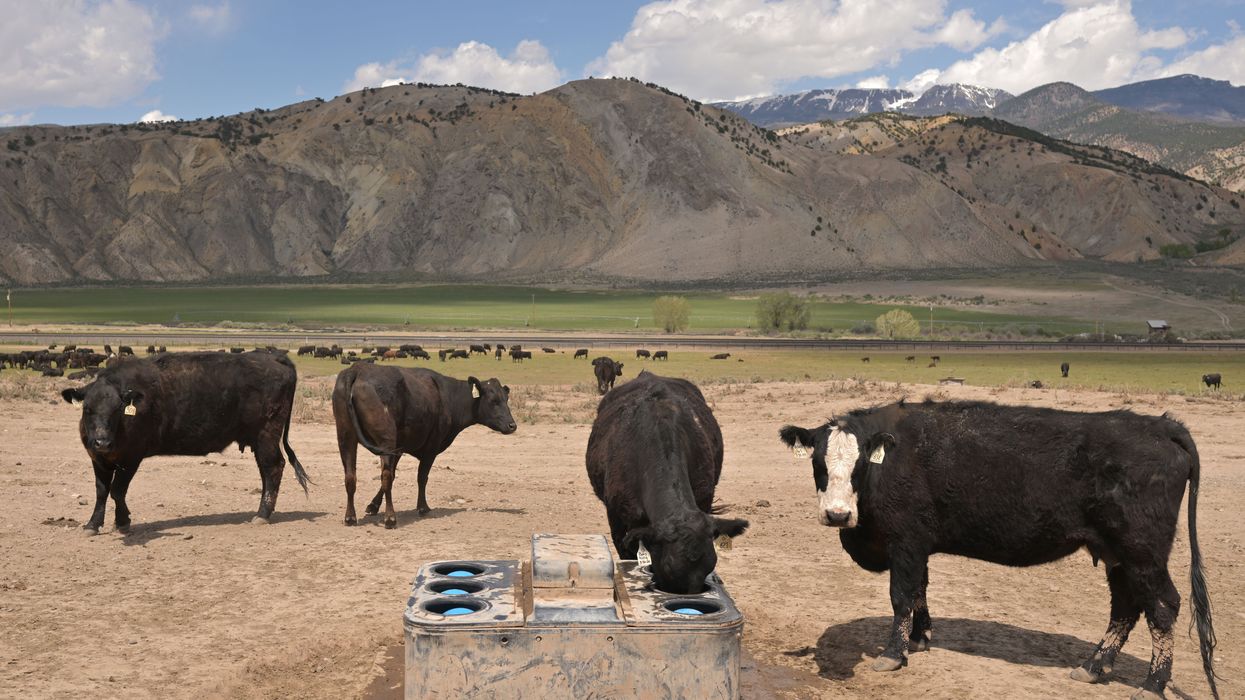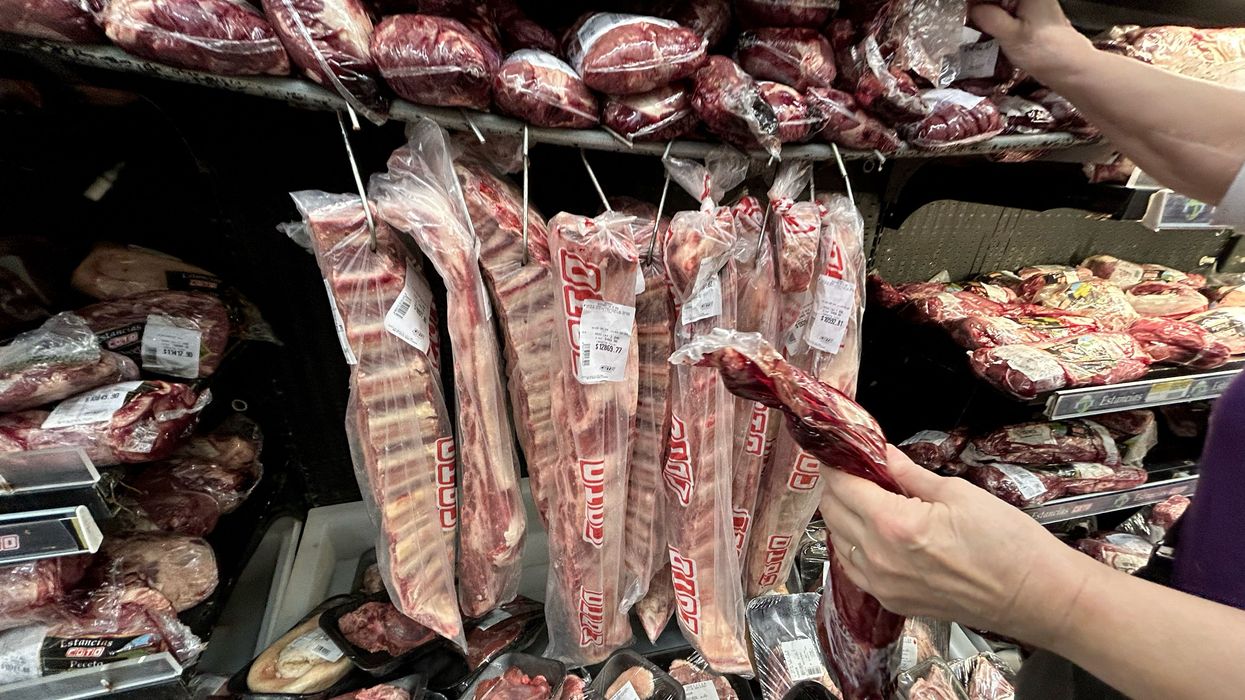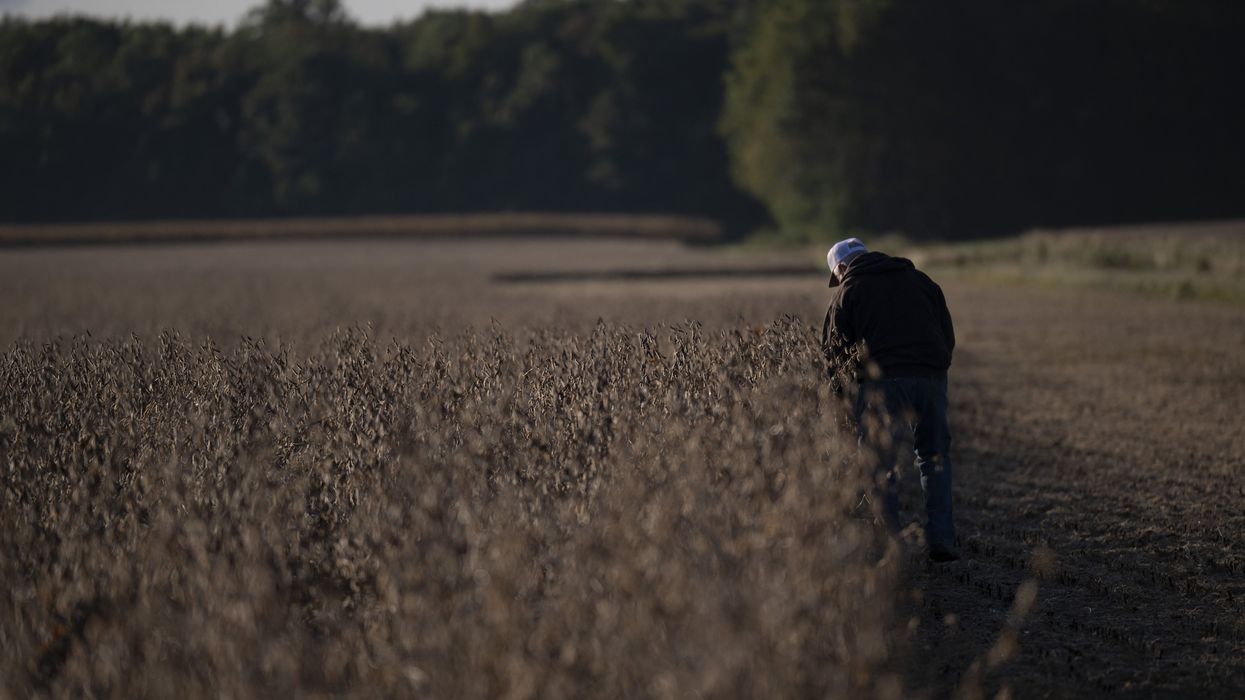"President Trump's plan to buy beef from Argentina is a betrayal of the American rancher," Christian Lovell, an Illinois cattle producer and senior director of programs at the organization Farm Action, said in a Monday statement. "Those of us who raise cattle have finally started to see what profit looks like after facing years of high input costs and market manipulation by the meatpacking monopoly."
"After crashing the soybean market and gifting Argentina our largest export buyer, he's now poised to do the same to the cattle market," he continued, referring to one of the impacts of Trump's tariff war. "Importing Argentinian beef would send US cattle prices plummeting—and with the meatpacking industry as consolidated as it is, consumers may not see lower beef prices either. Washington should be focused on fixing our broken cattle market, not rewarding foreign competitors."
"Trump has done more in the past month to help Argentina than he has to help the American people."
"With these actions, President Trump risks acting more like the president of Argentina than president of the United States," Lovell declared. The US leader is a key ally of the nation's actual president, Javier Milei, whose austerity agenda has created the need for a massive bailout from Washington, DC.
Farm Action's proposed fix for the US is to tackle the "structurally flawed system" with three steps: "Reinstate Mandatory Country of Origin Labeling (MCOOL) for beef and pork, restore competitive markets by enforcing antitrust laws, and rebuild the US cow herd to achieve national self-reliance in beef production."
The group was far from alone in criticizing Trump's weekend remarks and offering alternative solutions to reduce US prices.
"We appreciate President Trump's interest in addressing the US beef market, which has been producing all-time record-high consumer beef prices," said Bill Bullard, CEO of R-CALF USA, the nation's largest cattle association, in a statement. "We urge the president to address the fundamental problems in the beef market, not just its symptom."
"The symptom is that the US has shrunk its beef cow herd to such a low level that it can no longer produce enough beef to satisfy domestic demand," he continued. "But the fundamental problem is that decades of failed trade policies have allowed cheap, undifferentiated imports to displace the domestic cow herd, driving hundreds of thousands of cattle farmers and ranchers and millions of domestic beef cows out of the domestic beef supply chain."
"In addition, the nation's beef packers and beef retailers have been allowed to concentrate to monopolistic levels, enabling them to interfere with competitive market forces," he asserted. "Attempting to lower domestic beef prices simply by inviting even more imports will both exacerbate and accelerate the ongoing dismantling of the domestic beef supply chain."
National Cattlemen's Beef Association CEO Colin Woodall said that "NCBA's family farmers and ranchers have numerous concerns with importing more Argentinian beef to lower prices for consumers. This plan only creates chaos at a critical time of the year for American cattle producers, while doing nothing to lower grocery store prices."
"Additionally, Argentina has a deeply unbalanced trade relationship with the US," Woodall noted. "In the past five years Argentina has sold more than $801 million of beef into the US market. By comparison, the US has sold just over $7 million worth of American beef to Argentina. Argentina also has a history of foot-and-mouth disease, which, if brought to the United States, could decimate our domestic livestock production."
Justin Tupper, president of the US Cattlemen's Association, highlighted the rising costs that ranchers are enduring.
"The cost of producing beef today is accurately represented in the consumer markets where it is sold," he said. "Ranchers are facing historic highs for feed, fuel, labor, and land—and those costs have risen far faster than beef prices on grocery shelves."
"When policymakers hint at intervention or suggest quick fixes, they can shake the market's foundation and directly impact the livelihoods of ranchers who depend on stable, transparent pricing," Tupper warned in the wake of the president's recent remarks. "Sudden price moves make it harder for independent producers to plan, invest, and keep their operations running."
"Efforts to support consumers must consider the economic realities on the ground and ensure the voices of independent ranchers lead the discussion," he added. "Market-driven prices—not mandates or panic interventions—have delivered value for generations. Let's focus on transparency, market integrity, and maintaining the conditions for sustainable rural economies."
Trump's signal that the US may buy more beef from Argentina comes as poll after poll shows that Americans—whose federal minimum wage hasn't increased in over 15 years—are stressed about the climbing costs of groceries. In addition to beef, shoppers are facing higher prices for staples such as coffee and eggs.
The Democratic National Committee also called out Trump's proposal on Monday, with Kendall Witmer, the DNC's rapid response director, charging that "Trump has done more in the past month to help Argentina than he has to help the American people, who are struggling to afford everything from rent to groceries."
"Because of Trump, farmers are on the brink of bankruptcy, and the government has been shut down for almost a month," Witmer added. "You would think that the so-called 'America First' president would be focused on reopening the government and saving millions of Americans from skyrocketing healthcare premiums—but Trump is showing his true colors. He only cares about helping himself and his friends, even at the expense of the American people. Let's be clear: MAGA now stands for Make Argentina Great Again."


